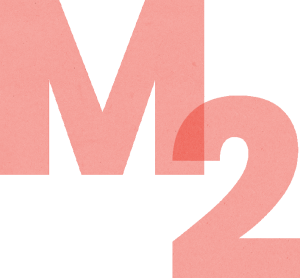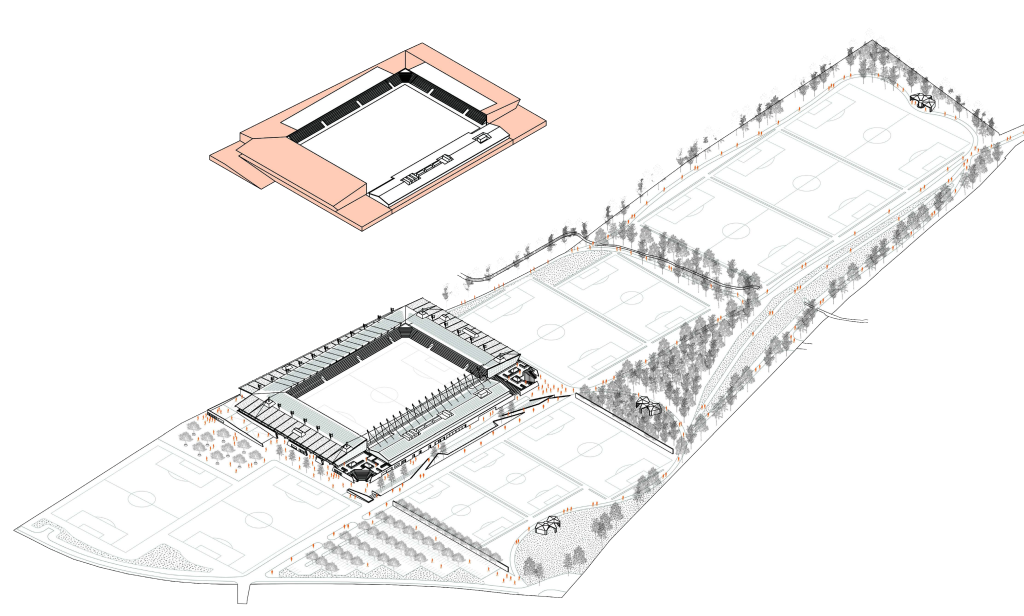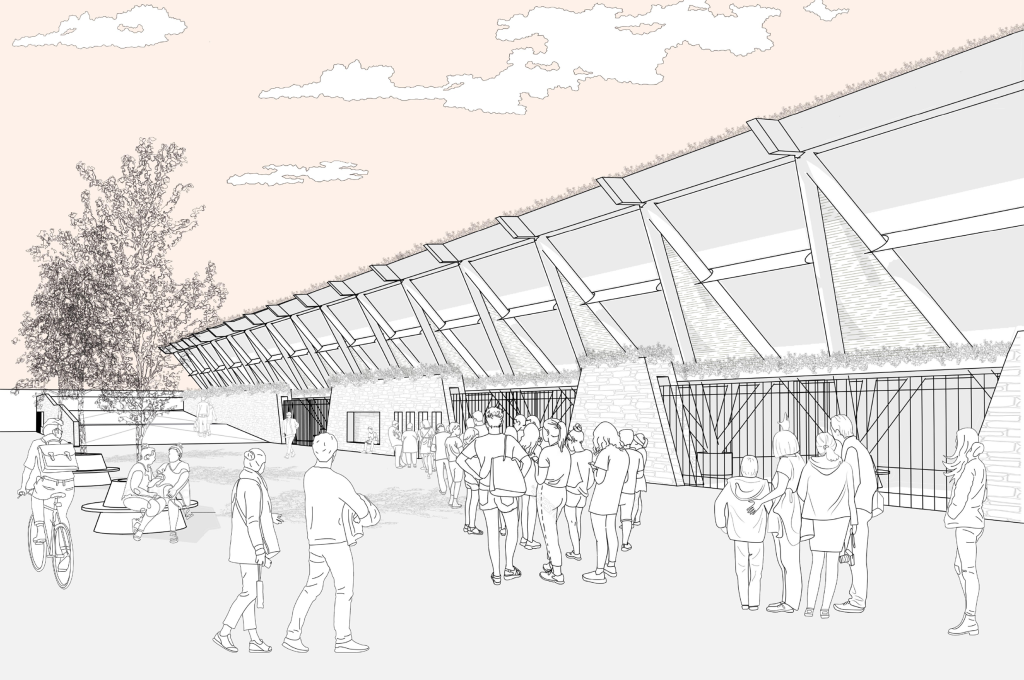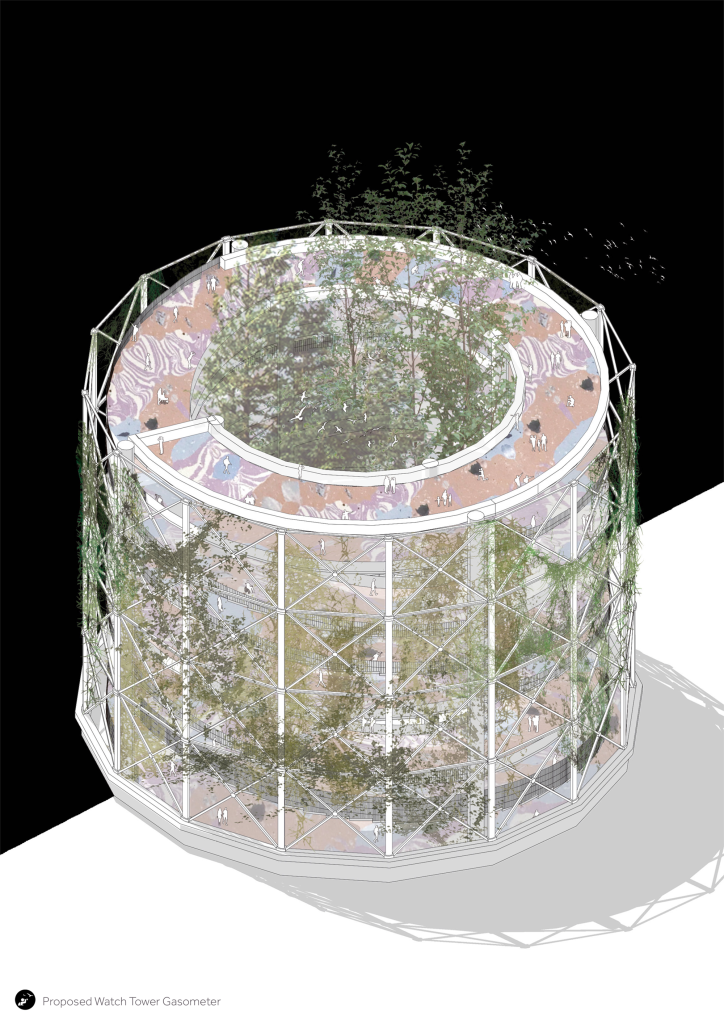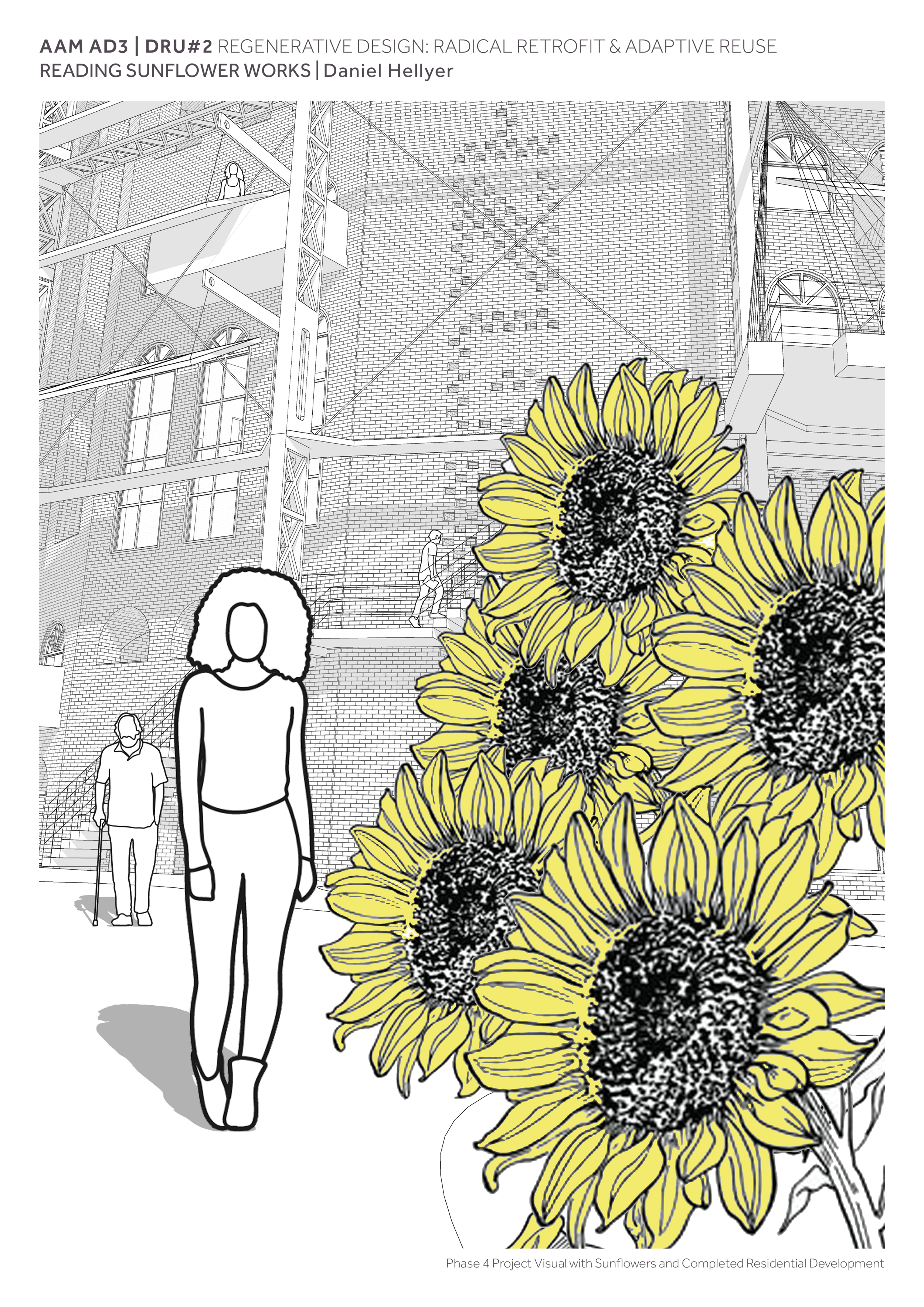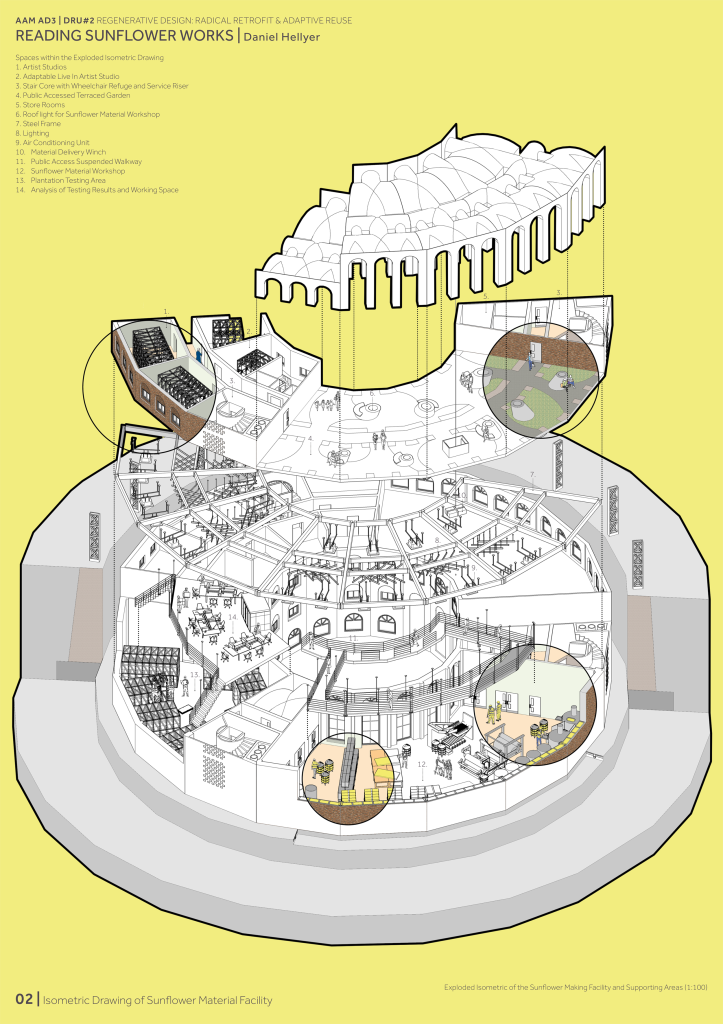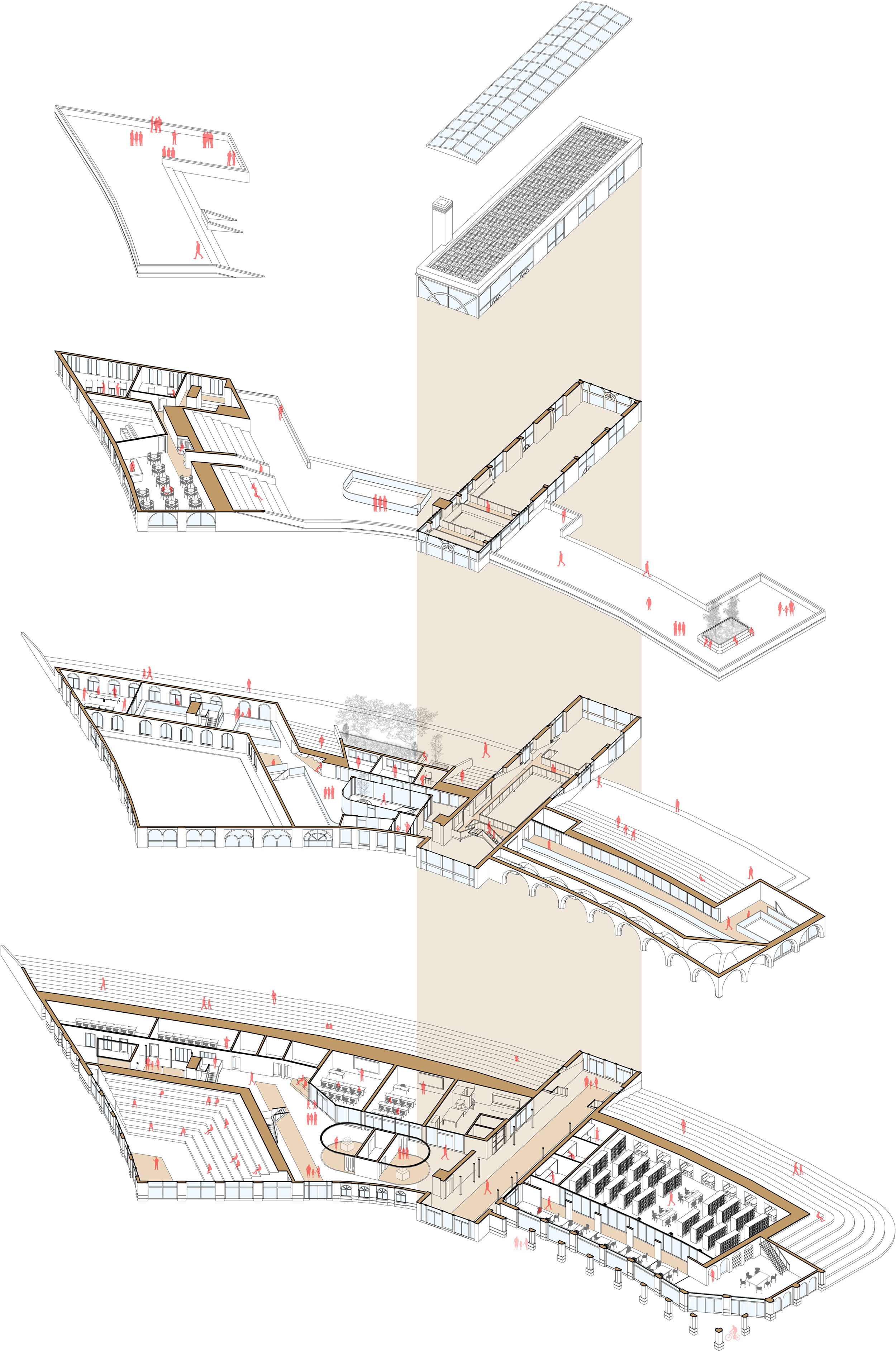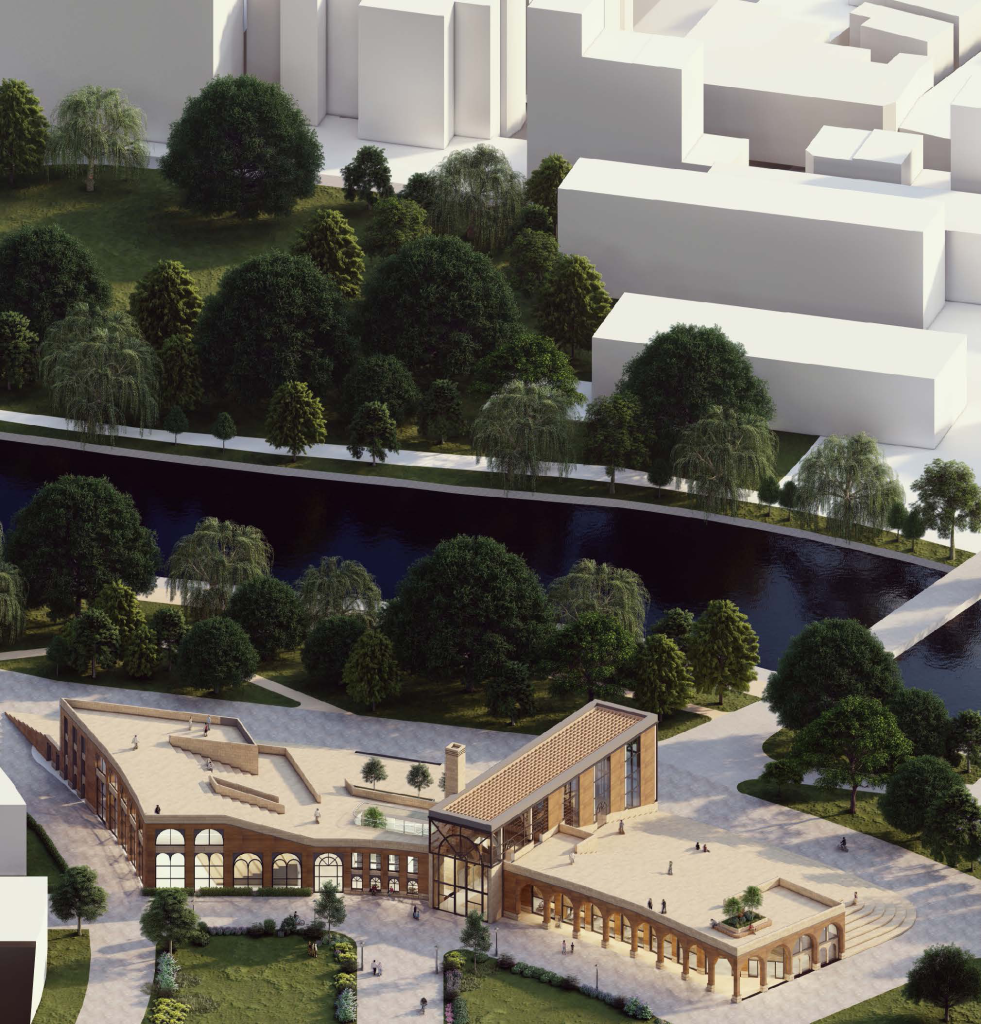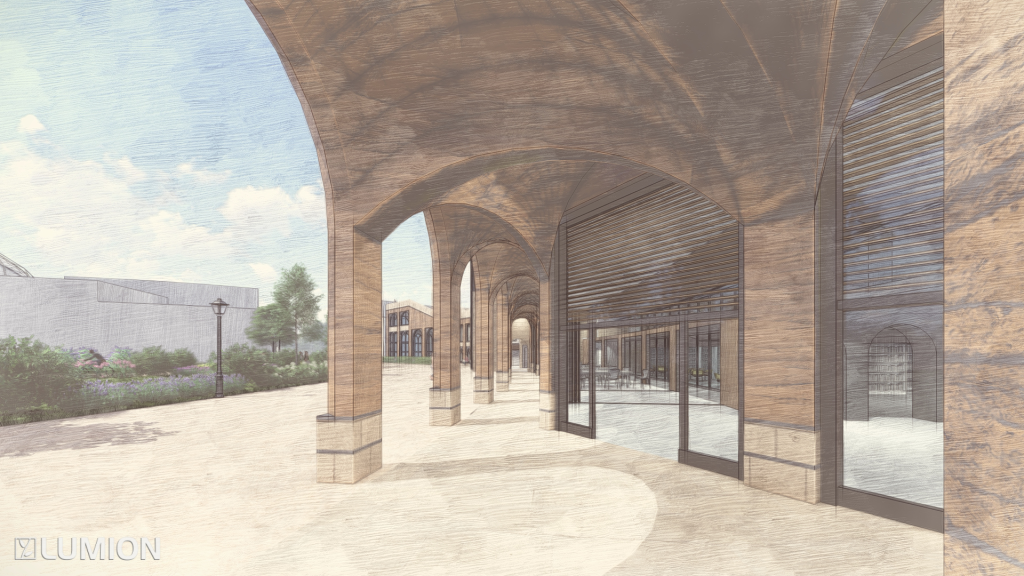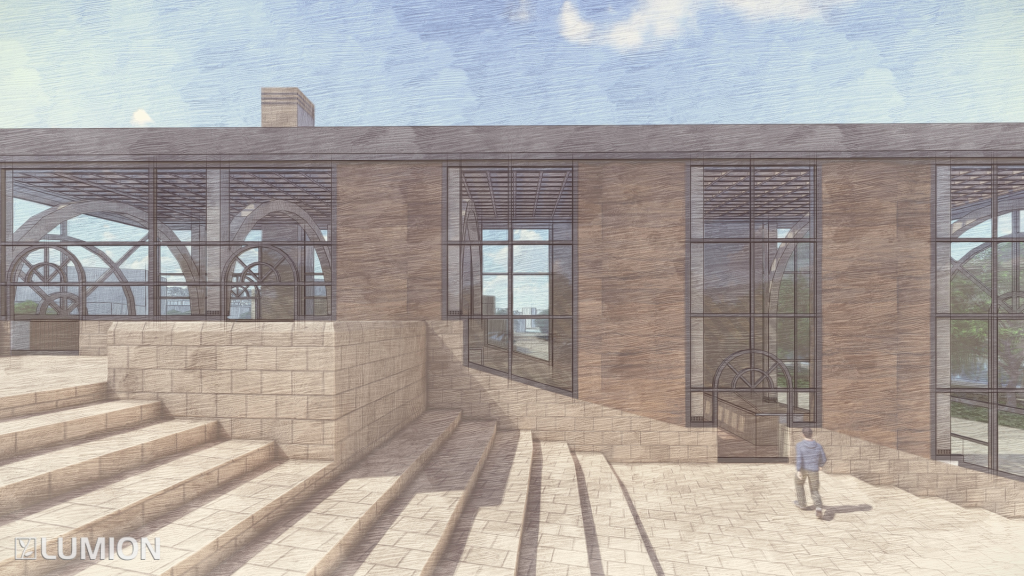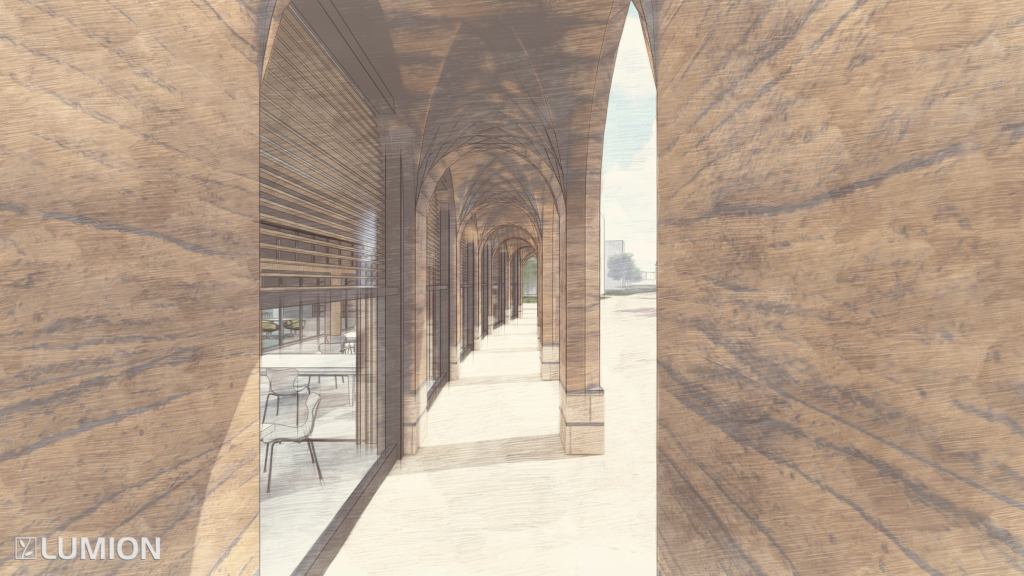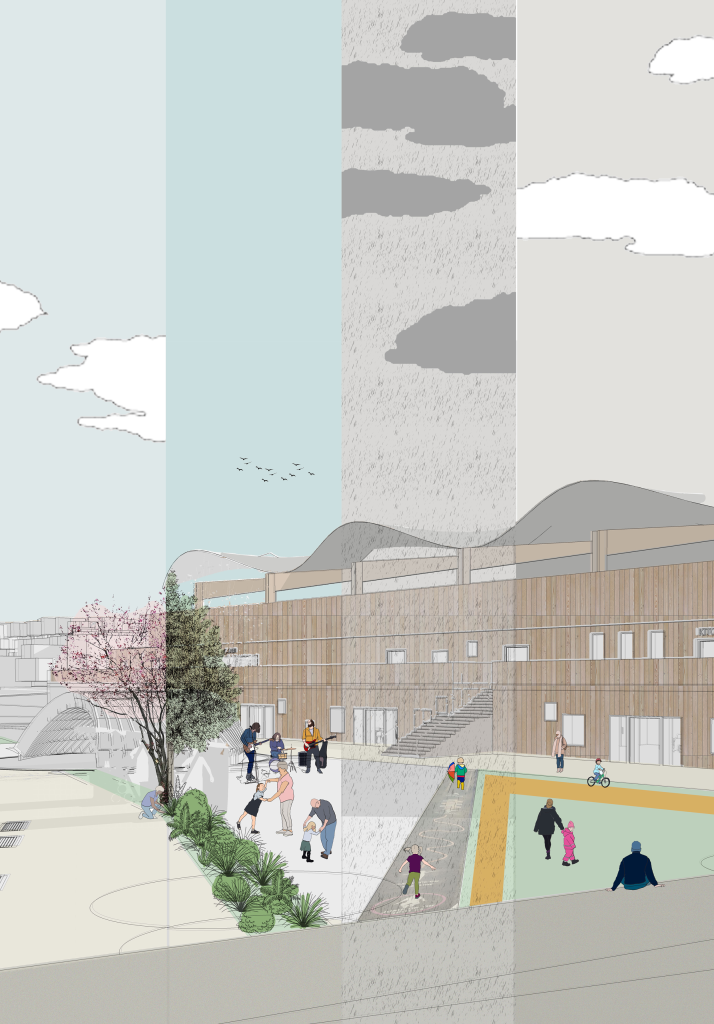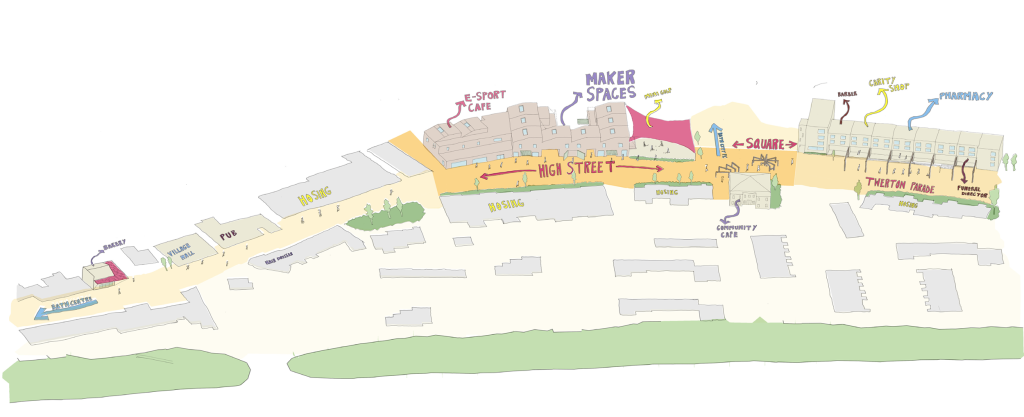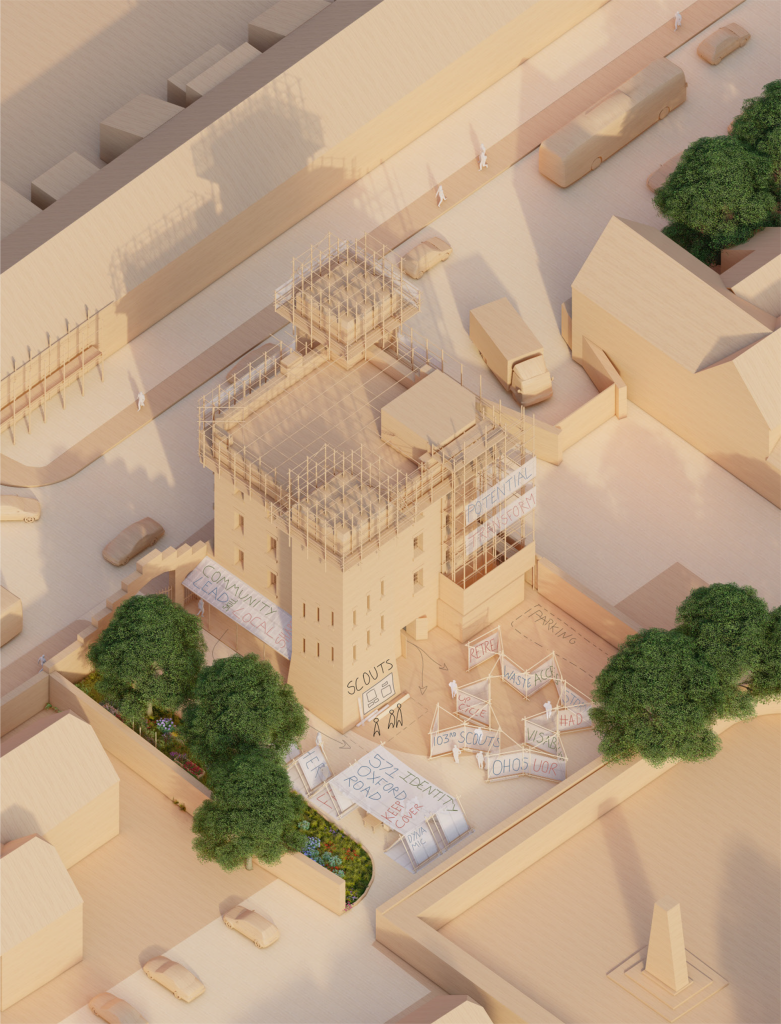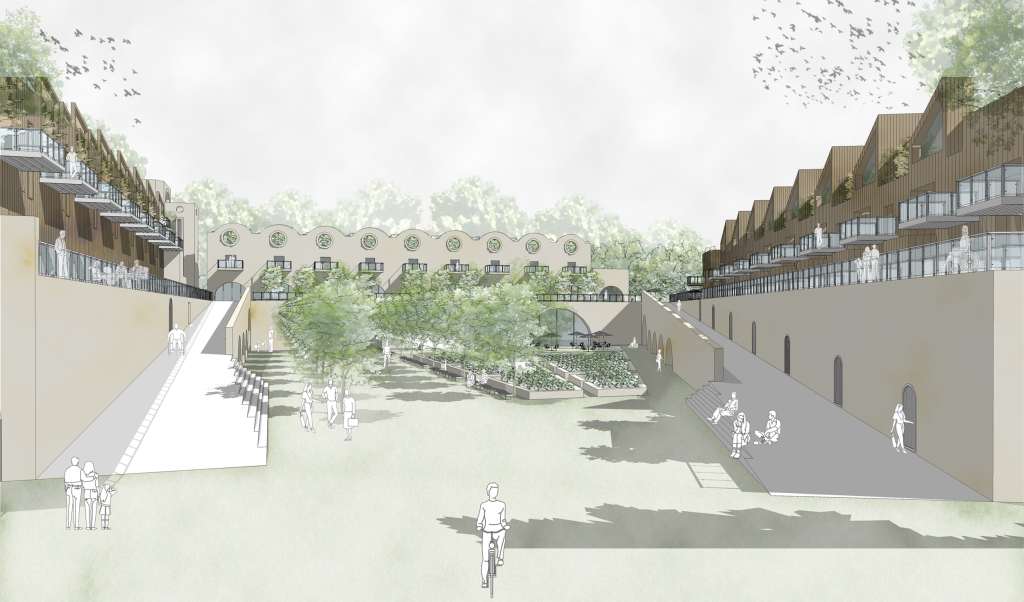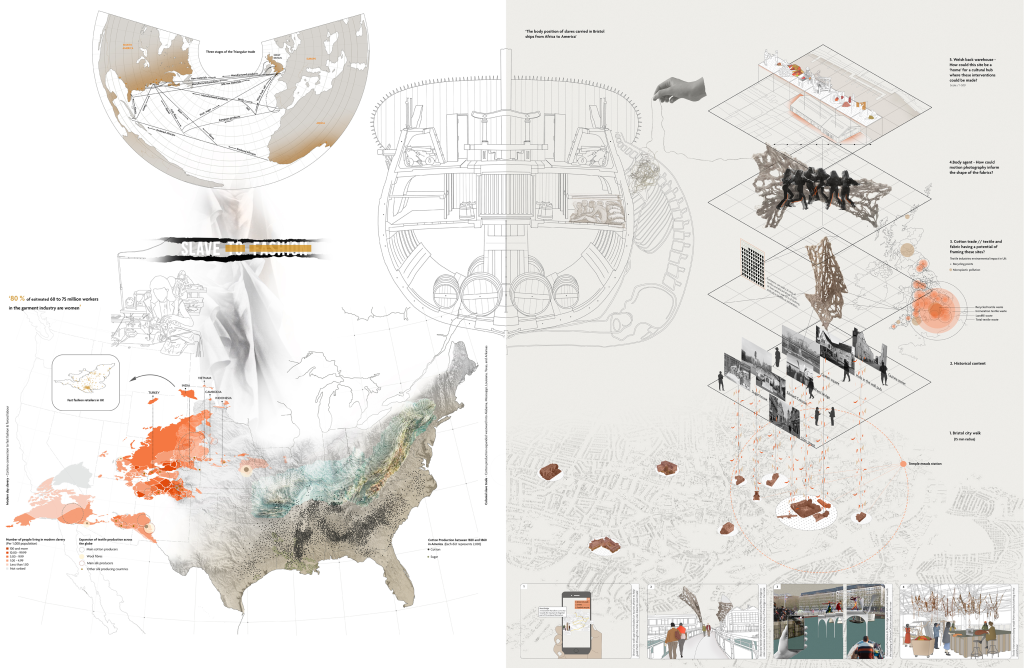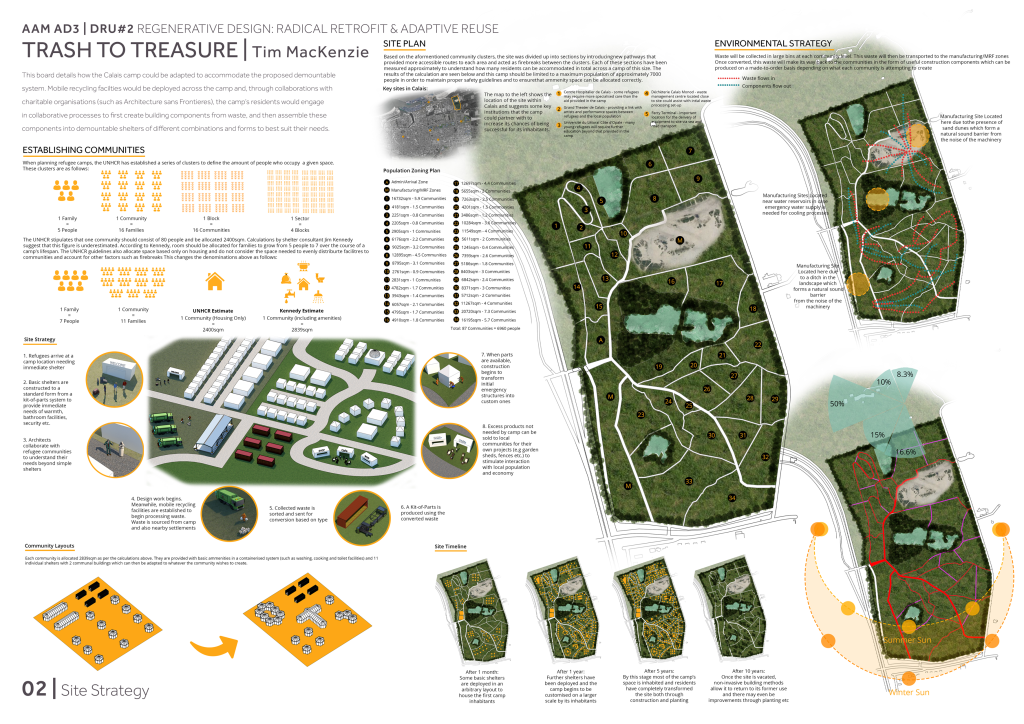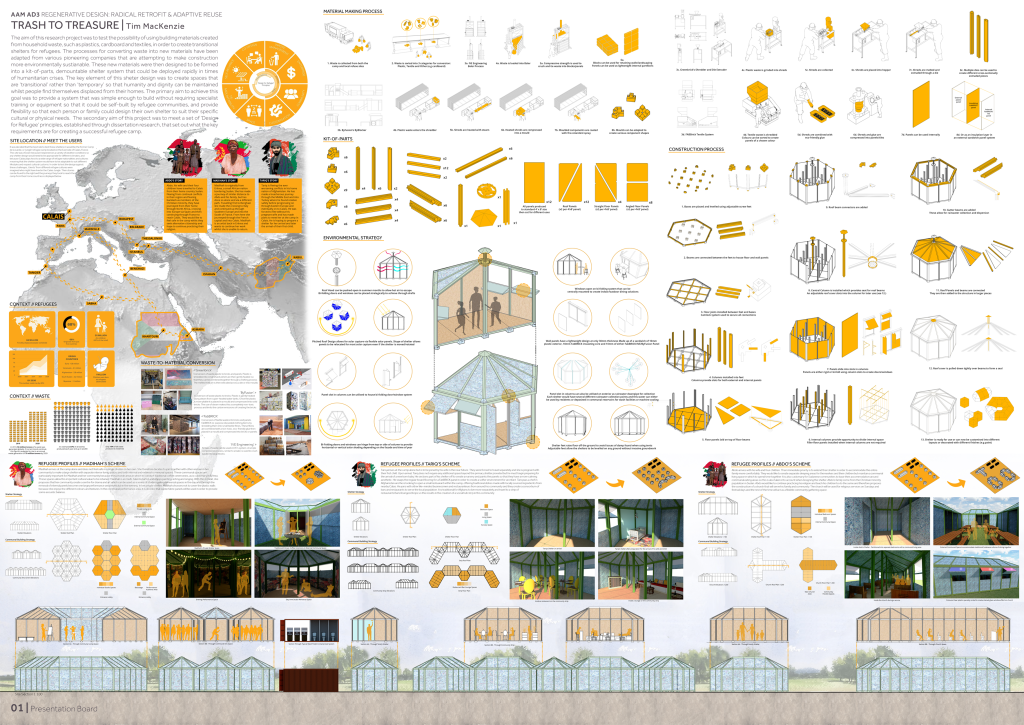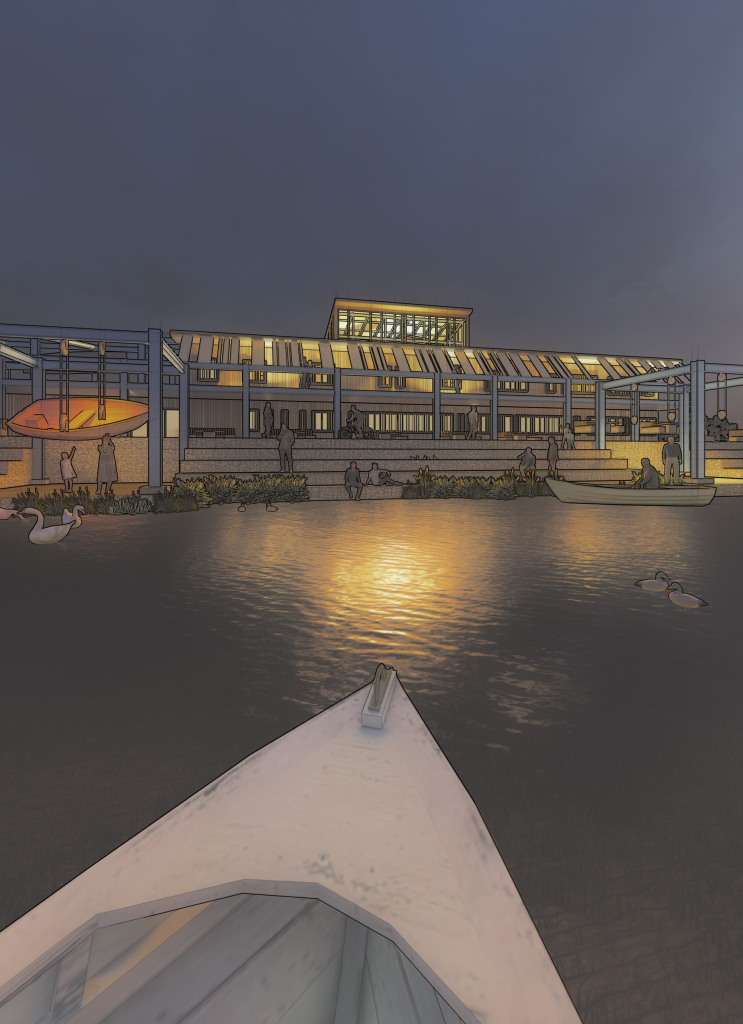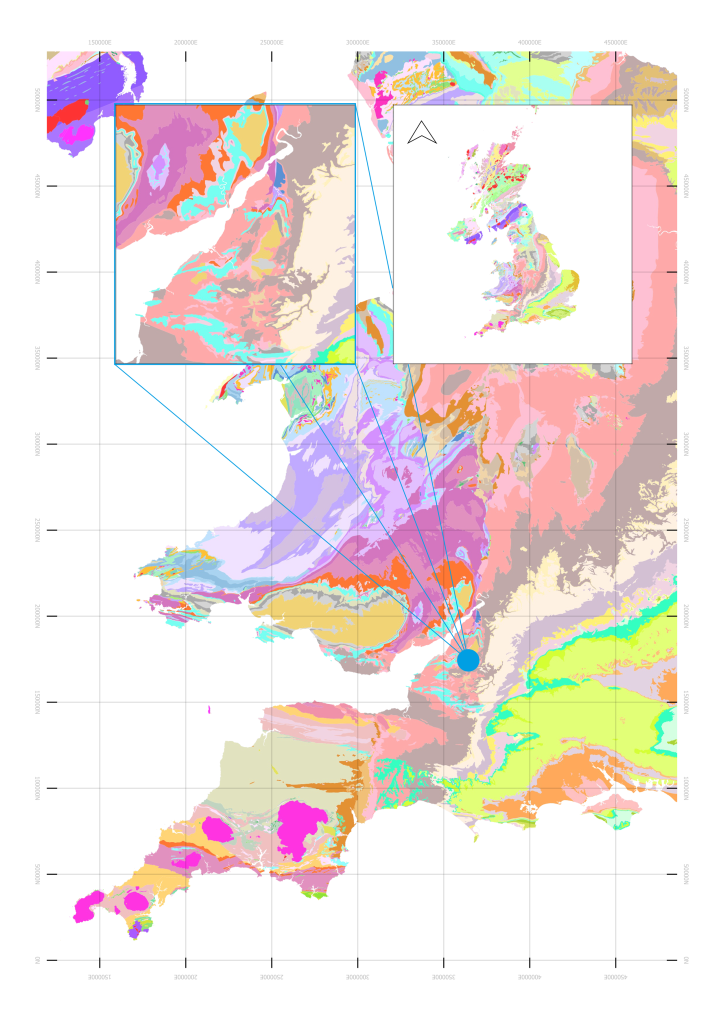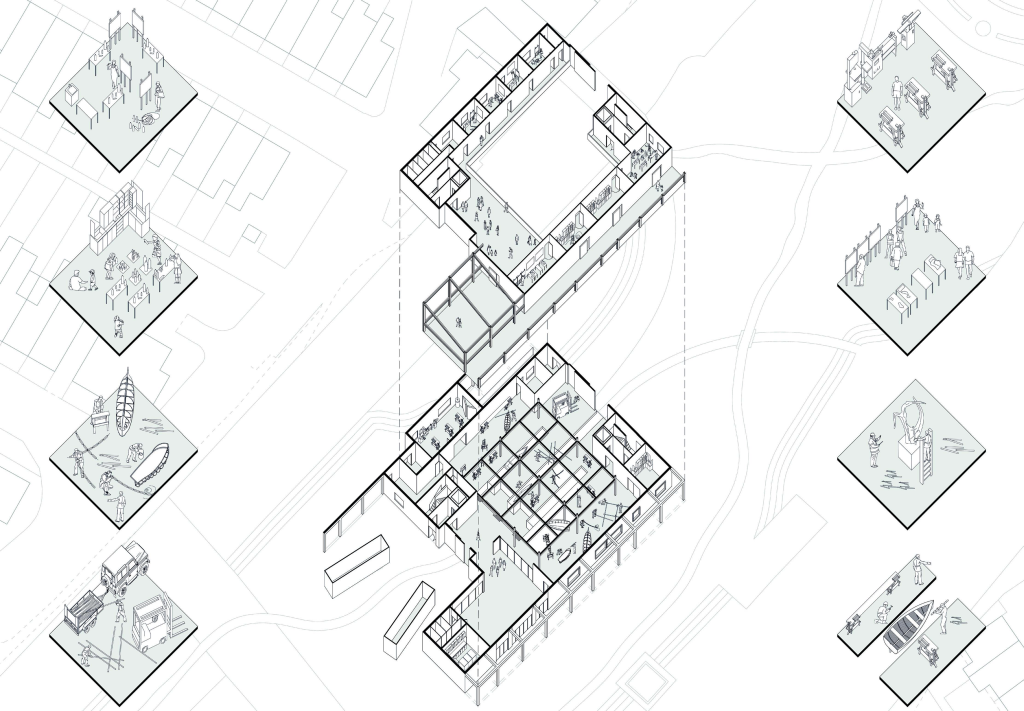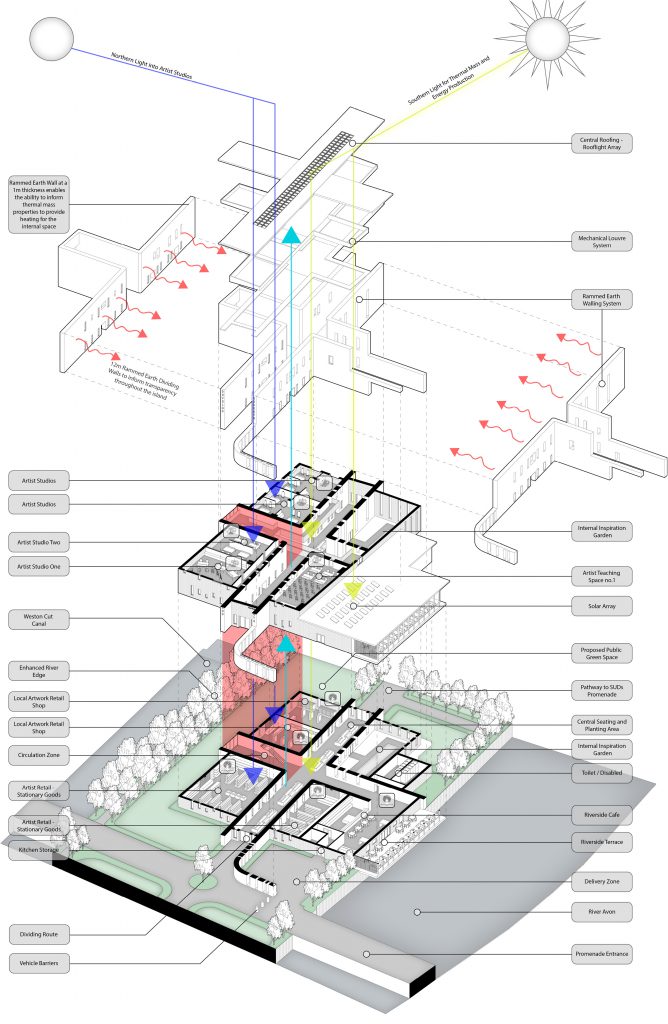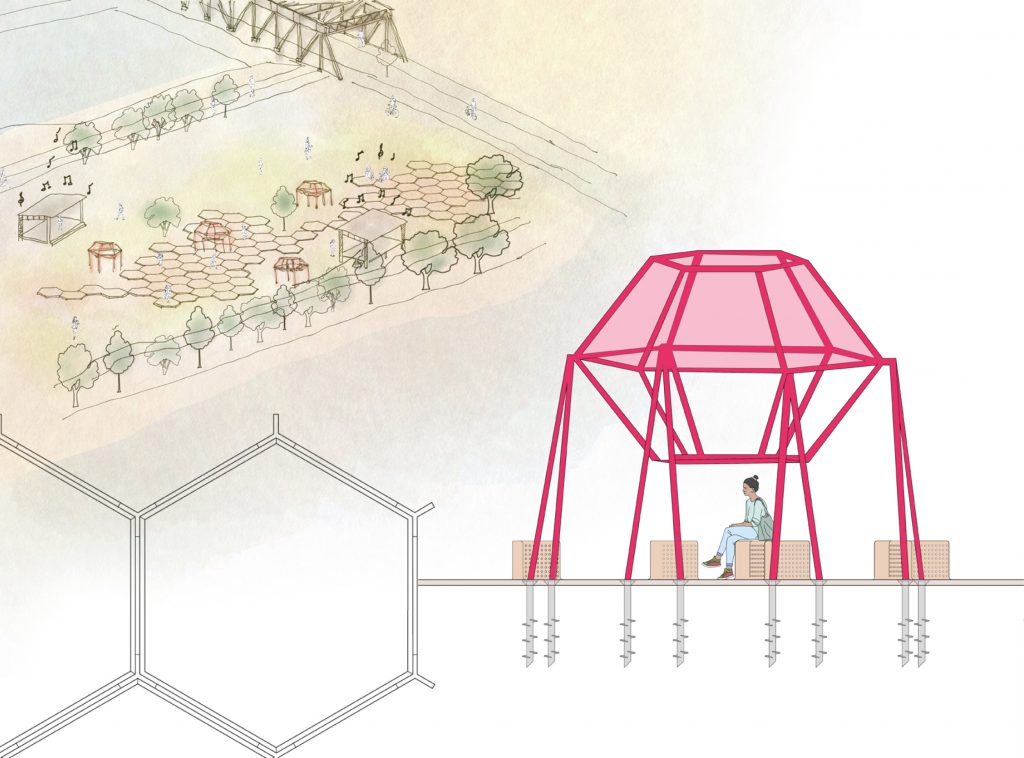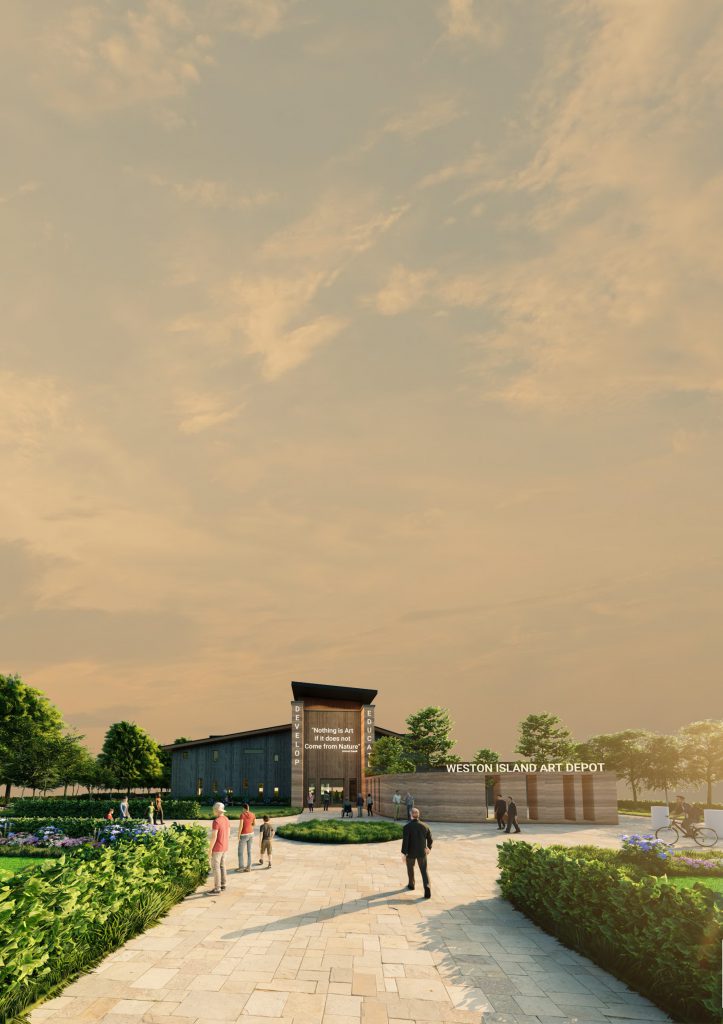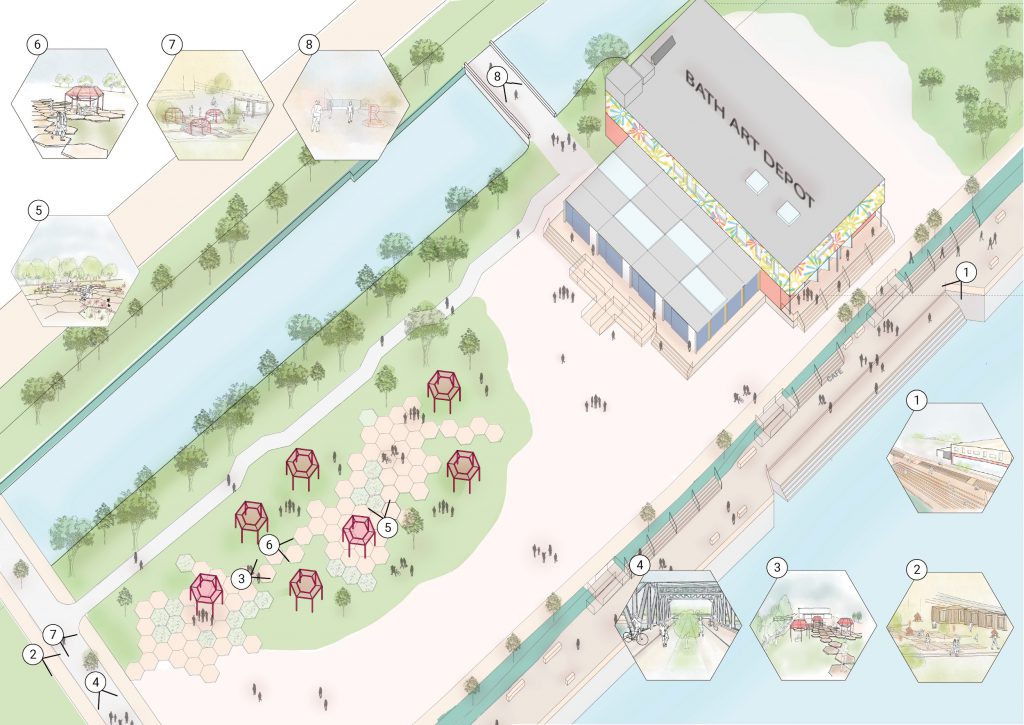SPRING SUMMER STUDIO
AAMAD3 DRU1 - Collaborative Design:
COMMUNITY ENGAGEMENT & EMPOWERMENT
The Autumn Year 1 Design Module, Support Structures introduced students to processes of appraisal and proposition, and the opportunities and responsibilities of the architect as an agent of change. It is based on the premise that architectural design is driven by an utopian impulse, a conscious striving to change the world for the better made manifest in the architectural project.
Rather than setting out to solve a problem, the students identified specific moments within the town which they thought should be cherished and developed site specific interventions which supported those aspects of place, creating a new way for it to be perceived or an opportunity for it to be appreciated.
The interventions were conceptualised, discussed, made and re-made, in a small team. The result was scaled up to full size and deployed, photographed and filmed in the town. Subsequently students measured the part of town that they situated their device and created a drawing that combined every aspect of the project including the conceptual, locational, propositional and experiential performance.
As a public work installed on site the project also required students to engage with the multiple publics of Reading to consider architectural works as something constructed with, for, and in relation to others.
Module Convenor: Amy Butt
Design Studio Team: Penelope Plaza, Darren Bray, Amy Butt, Zoe Berman, Graham Thompson, Juan Leiva, Vsevolod Kondratiev-Popov
Visitors: Thomas Aquilina and Ceri Williams
AAM AD3 is the third and the last in a series of related postgraduate design modules that explores research based architectural design processes. It provides students with the opportunity to define an individual design position in relation to a current architectural issue supported by a relevant research theme and methodological framework defined by the ‘design research unit’ (DRU).
Building on the group and individual work from Year 1, students develop a comprehensive individual design project grounded in the student’s own research and supported through tutorials as well as specialist consultations. The project may be linked to research conducted in Research Methods 2 (AAM RM2 Dissertation)
and is accompanied by a technical report to evidence an understanding of relevant technical issues.
DRU#1 is interested to develop design methodologies that work with the physical and social territories of a site. We work with our students to establish contexts of our projects and then map these territories before proposing ideas and possibilities for these places. In 2020/21 the studio responded to a project that required an understanding of the possibilities of a site to become an art depot as a centre for art in the local community located in East Bath. This required our students to work with stakeholders including local artists, investors and the broader community to identify the vison for the site. This year, the year 1 students took this master plan and identified ideas around building re-use. The year 2 students chose sites in Bath to continue to respond to their knowledge of the social and physical territories of Bath. The brief, under the title ‘Transforamtive Participation,’ asked the studnets to establish how their projects engage with a community (the social territory) and a place (the physical territory) and set out a design methodology that
genuinely involves a group of people who are or could be invested in the project via an element of participation.
STUDENTS [YEAR 2]:
Ethan Cherrett, Gina Bugten Dinesen, Kimberley Pearce, Luke Maguire, Sellasie Humado
[YEAR 1]:
Luke Collinson, Torin Kenny
TUTORS
Academic Lead: Prof. Lorraine Farrelly
Studio Practitioners: Dr Piers Taylor [Invisible Studio] & Georgie Grant [Onion Collective]
Environmental Design Consultancy: Shashank Jain & Joao Pedro [studio4215]
Structural Design Consultancy:
Stephen Melville & Lloyd Evans [Format Engineers]
CONTRIBUTORS:
Charley Brentnall [Xylotek] Philip Raby, Simon Periton & Nicola Turner [Bath Art Depot], Dr Alessandro Ayuso [University of Westminster],John Cook [University of Westminster], Oliver Froome- Lewis [UoR], Dr Gillian Horn [Questions of Design]
SPRING SUMMER STUDIO
AAMAD3 DRU2 - Regenerative Design:
RADICAL RETROFIT & ADAPTIVE REUSE
AAM AD3 is the third and the last in a series of related postgraduate design modules that explores research based architectural design processes. It provides students with the opportunity to define an individual design position in relation to a current architectural issue supported by a relevant research theme and methodological framework defined by the ‘design research unit’ (DRU).
Building on the group and individual work from Year 1, students develop a comprehensive individual Design Thesis Project grounded in the student’s own research and supported through tutorials as well as specialist consultations. The project may be linked to research conducted in Research Methods 2 (AAM RM2 Dissertation) and is accompanied by a technical report to evidence an understanding of relevant technical issues.
DRU#2 is interested in architecture that is conceived as an integral part of the regenerative system. Under the title ‘Materials Matter: Towards New Material Ecologies and De- carbonised Futures,’ this year brief asked year 2 students to creatively explore the potential of reuse and recycling, envisoning buildings as valuable salvaged material banks within a new circular economy that sees our existing built environment ‘mined’ for resources rather than depleting our natural world through excess consumption.
To build new or not to build? – was a provocative question that prompted studnets to define their position and the briefs for their projects, instigating new modes of thinking of as well as designing and operating with buildings and materials. Projects were required to be based 100% on circular material philosophy, reusing existing buildings/structures, and exploring innovative solutions for how materials can be re-claimed, re-used, re-cycled and re-purposed, mitigating waste and defining a fully
regenerative and de-carbonised future.
STUDENTS [YEAR 2]:
Adam Dobson, Daniel Hellyer, Paniz Alizadeh-Irani, Paulina Lemos, Shanzina Alam, Timothy MacKenzie
TUTORS
Academic Lead: Dr Izabela Wieczorek
Studio Practitioners: Martin Lydon & Diana Dina [Haworth Tompkins]
Environmental Design Consultancy: Shashank Jain & Joao Pedro [studio4215]
Structural Design Consultancy: Stephen Melville & Lloyd Evans [Format Engineers]
CONTRIBUTORS:
Louise Linthwaite [Loughborough University], Dr Alessandro Ayuso [University of Westminster],John Cook [University of Westminster], Oliver Froome-Lewis [UoR], Dr Gillian Horn [Questions of Design]

